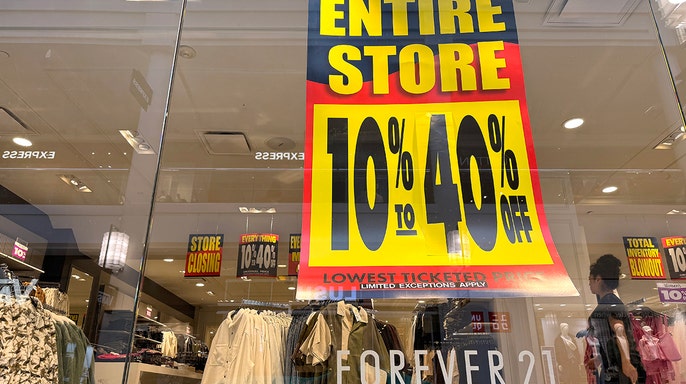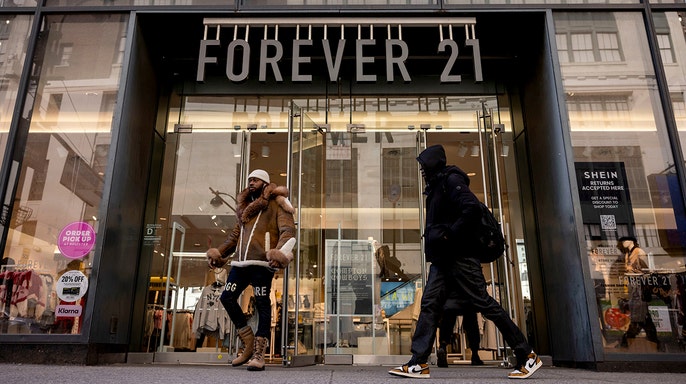why Forever 21 is closing U.S. stores, Shein’s role in fast fashion dominance, and the impact on malls. Get the latest market trends, investment risks, and what’s next for retail.
Forever 21 Files Chapter 11 Again: U.S. Stores to Close as Shein Dominates Fast Fashion
F21 OpCo, LLC, the operator of Forever 21 stores in the U.S., dropped a bombshell on March 16, 2025: It’s filing for Chapter 11 bankruptcy and winding down its American operations. While the brand’s international stores and website remain open, the move marks another blow to traditional mall retailers struggling to compete with foreign giants like Shein. The company’s CFO, Brad Sell, blamed rising costs, shifting consumer habits, and Shein’s aggressive pricing (thanks to tax loopholes) for the collapse.
But this isn’t just about Forever 21 closing—it’s a wake-up call for the entire retail ecosystem. Let’s break down what’s happening and why your local mall might look emptier soon.
Why Is Forever 21 Closing? Shein’s Tax Tricks and the Death of Mall Culture
Forever21’s downfall isn’t sudden. The brand has been on shaky ground since its first bankruptcy in 2019. This time, though, the stakes are higher. Sell specifically called out Shein and Temu for exploiting the de minimis exemption, a loophole that lets overseas retailers ship packages under $800 to the U.S. tax-free. This allows Shein to undercut Forever 21’s prices by 30–50%, flooding the market with $5 crop tops and $10 jeans.
Meanwhile, malls—once the heartbeat of American retail—are dying. Foot traffic has plummeted post-pandemic, and anchor stores like Forever 21 are closing left and right. With 40% of U.S. malls expected to shut by 2030, per Coresight Research, Forever 21’s exit adds fuel to the fire.
What’s Next for Forever 21? Liquidation Sales and a Hail Mary Sale
The bankruptcy filing kicks off a liquidation process at all U.S. Forever 21 stores, with everything from sequin dresses to denim jackets likely hitting clearance racks by summer. But there’s a twist: The company is also running a court-supervised auction to sell its assets. If a buyer swoops in (think: fast-fashion rivals or private equity firms), some stores might survive.
For now, though, the focus is on minimizing chaos. Employees will keep getting paid, and the website stays live. Internationally, Forever21 lives on through licensees, but the U.S. brand is on life support.
Pros and Cons: Who Wins and Loses From Forever 21’s Collapse?
PROS
- Shein and Online Retailers: With Forever 21 gone, Shein could swallow its market share.
- Mall Reinvention: Dead malls might finally get repurposed into apartments, gyms, or warehouses.
- Investor Opportunities: Distressed asset buyers could snatch Forever 21’s real estate cheaply.
CONS
- Job Losses: Thousands of retail workers face layoffs.
- Mall Vacancies: Forever 21’s exit leaves gaping holes in already-struggling malls.
- Investor Risks: Shareholders and lenders may recover pennies on the dollar.
Latest Market Trends: Fast Fashion Wars and Mall Meltdowns
- Shein’s Tax Battle Heats Up (Source: Business of Fashion)
Lawmakers are pushing to kill the de minimis loophole, which would level the playing field for U.S. retailers. But Shein’s lobbying arm is fighting back hard. - Mall Landlords Shift Strategies (Source: Retail Dive)
Simon Property Group is converting vacant Forever 21 spaces into coworking hubs and pickleball courts. Desperate times, folks. - Gen Z Ditches Fast Fashion (Source: WSJ)
Young shoppers are prioritizing sustainability over $3 tank tops—bad news for Shein and Forever21. - Shein Files for IPO (Source: CNBC)
Despite controversy, Shein aims to go public in 2025, valuing the company at $65 billion.
Investment Insights: Should You Bet Against Malls?
The Forever 21 closing saga underscores two key trends:
- Fast Fashion’s Reckoning: Shein won’t rule forever. Rising labor costs and eco-conscious Gen Zers could flip the script.
- Malls Aren’t Dead—Just Evolving: Savvy investors are buying mall debt at discounts, betting on redevelopment opportunities.
Short-Term Risks: Retail stocks (especially mall-based chains) remain volatile.
Long-Term Opportunities: Look at logistics firms supporting e-commerce giants or ESG-focused fashion startups.
Final Take: What Forever 21’s Exit Means for Your Wallet
Forever21’s bankruptcy isn’t just another “retail apocalypse” headline. It’s a sign of how Shein’s cutthroat tactics and dying malls are reshaping American shopping. While clearance sales might tempt you, keep an eye on the bigger picture: The fast-fashion era is fading, and the malls of tomorrow won’t look anything like the ones you grew up with.
For updates on store closures or asset sales, visit Forever 21’s official site or the bankruptcy portal here.









